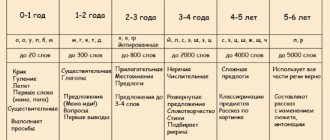Do you want your child to become a TV or radio presenter or a famous actor in the future? Are you planning to build a successful career on stage? Then you need to work long and hard on developing stage speech. The teaching method includes a variety of diction exercises. There are special acting classes for both adults and children. Do you want to know what stage speech is and learn simple exercises for the development of the speech apparatus? Then read this article to the end.
What is special about stage speech?
Every person who dreams of becoming a famous actor must regularly perform stage speech exercises. A loud voice, clear diction, correct placement of accents in the text - all this allows you to express feelings and emotions, and play out the work. The technique of stage speech is not as simple as it might seem at first glance. The actor must be able to convey the mood, show the inner world or other psychological traits of his character. If you learn to do this correctly, you can very soon become a real star of cinema and theater scenes.
Stage speech, as an integral part of acting, developed gradually and became more and more perfect. Ancient Greek orators practiced speech in motion, because such a speech invariably aroused special interest of the public. Even then, people realized that not only the meaning of the words in the text is important, but also the intonation and method of reading.
Demosthenes, a famous orator and philosopher, had a very quiet voice by nature, his speech was slurred and many listeners often did not understand the meaning of his words. Then he began to work on himself, doing diction exercises every day. To do this, Demosthenes went out to the edge of a cliff by the sea and made his speech, shouting over the noise of the waves. Also, his contemporaries claim that he often secluded himself in a cave and rehearsed his monologues there in order to be able to hear himself.
Fortunately, today you don’t need to resort to such extreme methods to improve your pronunciation and expressiveness. Stage speech lessons for children and beginners are quite simple. You can do simple diction exercises at home on your own or attend classes with a teacher.
Exercise 2. “Sound singing”
While doing this exercise:
- your voice will sound with new colors;
- speech will become clearer.
We need: Text.
What are we doing?
For example, the text could be like this. “Do you know that “Speech development exercises help me in life and in my career!” They hear me, they listen to me, they understand me. My colleagues like me, I captivate my friends and build my life!”?
Mantra? YES! But it begins to work if you use a certain technique when reading it. So, we begin to read our mantra, removing all consonant sounds, then vowels. It will sound like: “ U-A-E-I-YA A-I-I-E E-I O-O-A-YU E I-I AND A-E-E!” and so on,” Read the same text, but without the vowels.
These are the mantras that work!
How to quickly improve your speaking technique?
If you want your speech to become beautiful, clear and correct, you need to regularly attend special lessons. This is not surprising, because the teachers know their subject very well. You've probably attended lectures more than once and listened to a very boring and inarticulate speech that made you want to sleep. A professional speaker uses all the capabilities of his speech apparatus to constantly hold the attention and attract the interest of listeners. Stage speech lessons will be equally useful for both future artists and businessmen, politicians and other specialists whose activities are directly related to communication.
To quickly learn to fully control your voice and improve your diction, perform simple stage speech exercises daily. It won't take you much time, but it will bring the desired effect. For beautiful speech, breathing is no less important than clear diction. That is why in stage speech lessons you will not only pronounce tongue twisters and read texts expressively, but also perform breathing exercises.
Speech and thinking
An interesting study was published in the scientific journal Proceedings of the National Academy of Sciences about how children learn their native language. Anthropologist Charles Young compared the babbling of babies just learning to speak with recordings of “language lessons” for chimpanzees. It turned out the following: unlike animals, children learn their native language not so much by imitation, but by independent experiments with words and sounds. The set of sound combinations in monkeys was very small. The kids freely went beyond what they had studied and experimented with word formation and changed the structure of words.
Thus, we can conclude that speech training in any form stimulates intellectual development and forms new neural connections.
This is interesting!
Biologist P. Garyaev conducted an interesting experiment - using a special device, he proved that a swear word can cause an effect similar to radiation exposure.
In our kindergarten classes, we do not try to make stars out of our students. Our main goal is to equip them with useful skills for a successful life. It doesn’t matter whether they choose the path of an artist or choose a profession far from the stage. The main thing is that they will have the knowledge and ability to communicate correctly, negotiate and attract the attention of their interlocutor with their speech for the rest of their lives. And this will help your children achieve success on their own, improve their quality of life and become better people every day!
Options for breathing exercises
High-quality stage speech technique largely depends on the speaker’s correct breathing. A person who gives a speech to an audience cannot afford to inhale air through his mouth. This will cause your breathing to become irregular and you will not be able to correctly maintain intonation and place accents. To prepare for public speaking, do the following exercises regularly.
- Breathe through your nose (inhale and exhale) with your mouth open for 3-5 minutes.
- Place both hands on your solar plexus. Take a deep and very slow breath (the process should take 3-4 seconds). At the same time, your hands will feel how your stomach rises, filling with air, and falls as you exhale. Such fluctuation should be clearly visible. If you don't feel anything, lean your body forward slightly as you inhale. Gradually increase the inhalation time.
- Exercise to train chest breathing. Inhale deeply, as if you are smelling a fragrant flower, then exhale very smoothly and draw in your stomach. Short inhalations and long exhalations will help you improve chest breathing. When you can do this exercise with ease, begin to say long phrases as you exhale.
These exercises are not difficult, but very effective. Do them daily, and soon you will be able to deliver a long speech without hesitation or shortness of breath.
Improving articulation
In order for the pronunciation of individual sounds to be intelligible and clear, you need to constantly train the organs responsible for articulation.
The lesson should begin with simple pronunciation of vowels, consonants and simple connectives. Try to make your voice sound loud and bright, not like in normal everyday life.
Various tongue twisters also help train the speech apparatus. Such poems, on the contrary, should be pronounced very quietly, in a whisper. Gradually increase the reading pace and volume. Let's look at a few simple tongue twister options to improve stage speech.
- “The bob got some beans.”
- “The clatter of hooves sends dust flying across the field.”
- “Prokop came - dill was boiling, Prokop left - dill was boiling.”
If you have been taking stage speech lessons for quite some time, you can gradually make the task more difficult for yourself by learning longer and more complex tongue twisters. If you can memorize and recite the longest tongue twister in the world, “Liguria,” you can be sure that you will become an excellent speaker.
A. P. Petrova. “Stage Speech” - Language Exercises
A. P. Petrova. “Stage speech” - A set of exercises with complex movements
Page 45 of 57
Exercise 1. Somersault training with an organized, fixed exhalation. At the exit from the somersault, at the moment of lifting, a long, comfortable exhalation is made in the form of “pfft...”. Then the same exhalation is done before the somersault; at the moment of grouping before the somersault, an involuntary intake of air occurs; at the exit from the somersault, a long, fixed exhalation occurs. As you master the exercise, the fixed exhalation after a somersault is replaced by pronouncing syllables like “bi-ba”, “di-da”, “ri-ra”, then, as usual, syllable combinations, words, and sentences are pronounced. Very carefully, only after mastering the sound, you can move on to a phrase subordinated to a specific effective task. Exercise 2. After a somersault, take a running jump onto the table, at the moment of the jump, a fixed exhalation, syllable, word, etc. The same thing at the moment of jumping off the table. (It is very important not to lose your support at the moment of dismounting and pronouncing words.) Exercise 3. The sound is trained while jumping on the wall bars - in the same way as usual, from syllable to sentence and phrase. A fixed exhalation or sound must be coordinated with the moment when the leg muscles are still tense, the movement is not completed, the body is mobilized and not relaxed - at the moment of touching the slats of the wall bars. Exercise 4. Students who know how to do the cartwheel can combine it with breathing and sound exercises combined with the moment of jerking their legs upward.
A. P. Petrova. “Stage speech” - Exercises with jumping ropes
Very slowly and carefully the number of jumps increases from five to forty. Exercise 1. Jumping on the ropes, accompanied by a short, fixed exhalation: “pff, pff, pff...” Exercise 2. Jumping is accompanied by involuntary long exhalations, “pff, pfft.” Exercise 3. Each jump coincides with the pronunciation of a previously trained syllable, then a chain of one-syllable, two-syllable and three-syllable words with all the consonant sounds of the alphabet. When breathing and speech are freely and easily coordinated with movement, you can move on to training sentences and small, humorous poems, changing the speed, pitch and strength of sound, depending on the simple tasks set in the story of the text. All previously mastered elements - good support, free throat, close resonance - are controlled in this exercise. Respiratory and physical overload should not be allowed during exercises. After 5-10-15 jumps, you need rest: moving around the room, exhale for a long time “pfffff”, making pauses after exhalation that are comfortable for everyone.
A. P. Petrova. “Stage speech” - Exercises in a difficult stage situation
Page 48 of 57
As you strengthen the correct skills of sounding your voice at different sound levels, you can move on to exercises that use greater physical activity, active movements, and various combinations of strength, tempo and pitch. For work, phrases are taken that require internal energy, composure, an active message, for example, culminating phrases that have become aphorisms from classical monologues: “A horse, a horse, half a kingdom for a horse!”, “Let me through, let me through to him, I want to see this man!” ", "Blow, wind, blow until your cheeks burst!", "Plague, plague on both your houses!" First, as usual, using three movements—half tilt, tilt, upward movement and slightly backward movement—syllables, words, and continuous speech beats are trained in three registers. “Ko-nya, ko-nya-half-the-kingdom-va-for-k-o-nya”, “Horse-ko-nya-half-the-kingdom-of-the-law”, “Horse-ko-nya-half-the-kingdom-of-the-law!” The correctness of the pharyngeal movement is checked gradually through the correct sound of the voice on stressed vowels. The energy and sharpness of movement increases, the sound and breadth of vowel pronunciation increases, the phrase gradually builds up to a scream. Then the phrase, also in elements, is combined with a somersault, running, jumping, and then trained as a single semantic whole, as a call, protest, accusation addressed to a partner, in order, for example, to escape from the hands of the enemy, or to run to the target and hit enemy, or force supporters to stop and lead them along. In this kind of exercises, elements of stage combat can be widely used, and later monologues, in which one can use fencing techniques worked out on stage movement (for example, scenes from the play “Cyrano de Bergerac” by E. Rostand).
A. P. Petrova. “Stage Speech” - Language Exercises
Page 44 of 57
The mouth is open, inhale through the nose, exhale through the mouth. The tip of the tongue rests firmly on the lower teeth, then barely touches the lower teeth. The same, with support in the upper teeth. The same, with the tip of the tongue supported in the alveoli. The tongue is relaxed and rests freely on the lower lip. As you exhale, the vowel “a” is pronounced silently. Make a “cup” of your tongue and hold it behind your upper teeth, then push the cup forward and back. Make the tongue a “sting,” then push the sting forward, to the right, to the left, and again behind the teeth. Make a “spatula” of your tongue, push the spatula to the edges of the lower lip, then the upper lip. Make “flats” under the tongue, as in a child’s game of horses, and, relaxing, lower the tongue. In front of the mirror, also inhaling through the nose and exhaling through the mouth, watch how the root of the tongue descends as you exhale. Exercises for organizing the correct sound The mouth is open, inhale through the nose, exhale through the mouth. Stand up straight. Raise your chest, release excess breathing through the “pf”. With your mouth open at “y”, slowly exhale the air, watching how your abdominal muscles contract, without lowering your chest. The articulatory structure does not change. The same thing, saying quietly a long, voiced “oo-oo-oo...”. The same with the vowels “o”, “a”, “e”, alternately, also ensuring the unity of the articulatory movement. The same thing, connecting vowels with all the consonants of the alphabet “bulu”, “vulu”, “gulu”, “dulu”, “zhulu”... “shulu”. Monitor the consistency of the pronunciation of the entire chain. If necessary, do a short intake of air after the tenth and twentieth combinations, then only after the fifteenth, then in one breath. Strictly monitor the unity of articulatory movement corresponding to the pronounced vowel. The same thing when pronouncing the combined combination “bolo”, “volo”, “golo”, then “balagavalala”... “belavelegele”... The articulation corresponds to the stressed vowel. The same thing when pronouncing the continuous combination “bu-pti-pta-pta”, “wu-pti-pta-pta”, “gu...”, etc. Articulation corresponds to the stressed vowel. The same thing when pronouncing the continuous combination “butochki-vutochki-gutochki-dutochki”... etc. The articulation corresponds to the articulation of the stressed vowel. In the first lessons, until defective consonant sounds are introduced, they are skipped in voice exercises. The exercises are taken from the methodology of O. Lobanova. To find a free position of the throat and the correct sound, the following exercise is useful: lie with your whole body on the table, face down. The legs rest lightly on the floor. Place your hands, elbows to the sides, on the table in front of you. Chant the syllables “gi-ga, yaya-ya, ni-na, mi-ma,” raising your head up and down, approaching the table first with your forehead, then your nose, then your chin. Very quickly, everyone feels and fixes the most comfortable position of the head, in which the voice sounds most freely. The same exercise is done by raising the body above the table to the chest and leaning on the hands and elbows (in the lion pose). Then do the same exercise, getting up and lying down on the table again, so as not to lose the correct sensation. Each stage of mastering a basic exercise must be combined with testing and strengthening it in real life. The simplest mechanical movements - tilting, movement of the tongue, jaw, lips, fixed exhalation - are constantly connected and reinforced in training with purposeful and meaningful actions. Such elementary tasks as “I want to inflate a ball”, “I want to get matches from the floor”, “I want to warm my hands”, “I want to make a “cup” or “needle” with my tongue, etc., organize the muscle movement necessary to create the correct support, exhalation, articulatory structure. We have already discussed the relationship between formalized and informal structures in training. In primary speech and voice exercises, training of formalized units of speech is widely used in all cases where phrases are taken within an isolated sentence. In essence, the training of a logical-grammatical intonation model is limited to the framework of a sentence, which includes a syllable, syllable combination, word, phrase, a complete sentence such as a proverb or a complete poetic line. Here is an example: first, while moving, a fixed exhalation is trained, a short “pf”, “pf”, then a long “pfff”, then for the exercise the sentence “The lady was checking in her luggage” is taken. On a half-inclination in the middle register, the syllables “ba”, “ba” are pronounced at the same height, then the continuous syllable combination “ba-ba-ba-ba-ba-ba-ba” according to the number of syllables in the sentence, then, when the teacher has recorded the correctness of the sound and pronunciation, a combination of a vowel with other consonants of the sentence “ba-da”, “da-ma”, after which the words “da-ma-sda-va-la-ba-gazh” are pronounced syllable by syllable, a half-tilt is made for each syllable. Next, the word is pronounced together - “lady-checked-in-luggage”, a half-slant is made for each word and, like a continuous syntagm, the entire sentence is pronounced with one emphasis on one half-slope “damasdavalabagazh”. When going through all groups of voice exercises, you need to pay attention to the principle of selecting sound combinations based on the place of formation of consonants, reinforcing the correct diction skills in voice work. Thus, the back-lingual “g, k, x” and iotated sounds need special speech-voice training. Work on them is included in the pharyngeal training section, but special attention to them is also required in voice exercises. So, for example, in three registers in motion the combinations “ko-ko-ko”, “o-ko-ko”, “o-ko-lo”, “o-ko-lo-ko-lo-ka-la” are pronounced , "about-the-bell-bell", "about-the-bell-bell". It is important to monitor the uniformity of the articulatory setting: the jaw is free, the tongue accurately records the location of the sounds “k” and “l”, the mouth is slightly open, the lips are rounded, the articulatory setting is maintained on vowels all the time, close to the sound “o”, although the vowel sound is pronounced like this, how it should sound in the pre-strike and post-strike positions. The same work needs to be done with other combinations of consonants “t-k-ch-n”, “weaves a weaver of fabric”, “f-p-l-k-ch”, “Philip stuck to the stove” and so on. The exercise is performed in three registers using three familiar movements: half-tilt - middle register, tilt - upper, lift - lower. To reinforce the correct sound in each exercise, sentences with the same vowels are selected: “The lady was checking in her luggage,” “We watered the lily, we saw Lydia.” The articulatory support is the stressed vowel repeated from word to word: “Needles pricking at the Christmas tree.” After mastering a group of exercises on a half-inclination in the middle register, they are consistently trained on a full inclination in the upper register and straightening - moving the body up and slightly back in the lower register. As you master the correct sound, the sentence is included in exercises with a partner. The text is “thrown” to the partner, turns into a meaningful story with the implementation of the simplest tasks: inform everyone about the event, warn, stop, etc. Depending on the task and the mise-en-scène, all indicators change: duration, nature of vowel pronunciation, pitch and strength of sound, then there is a sentence that turns into a phrase that sounds in the context of specific behavior. In primary voice training exercises, not only diction and sound are important, but also the logical and intonation structure of the text. When moving from a syllable to a sentence, attention must be paid to the unity of the speech beat and the nature of the stress, which, as is known, is expressed by different means: a change in volume (stronger - weaker), a change in pitch (higher - lower), a change in duration (longer - shorter) . It is useful to train these skills in voice and speech classes, constructing a sentence in a certain way and changing its design. “The lonely sail is white, the lonely sail is white, the lonely sail is white.” Initially, the training is built in connection with the intonation of punctuation marks, then, as the sound skill is mastered and in connection with it, the simplest effective tasks are used. For example, call your partner, then stop the retreating person: “Spring, spring is outside!”, then use the same phrase to force him to return, etc. When leaving, say goodbye to your partner, gradually distributing the sound further and further. “Reach” with sound an object placed at different heights (for example, when throwing a ball) and located either at a greater or a shorter distance. Exchange a phrase with a partner, throwing him a ball and changing the trajectory of the throw, approaching or moving away, and changing specific tasks. Thus, as in every set of exercises, as you master the simplest units of speech, you need to move on to training phrases addressed to your partner. Clarity and audibility of speech is ensured not only by good quality of voice and diction, but also, and above all, by mastery of internal acting technique. A. A. Popov makes the audibility of an actor’s speech in the audience dependent “on the sharpness and accuracy of thought”, E. A. Evstigneev - “on the ability to act and an accurate connection with a partner”, A. N. Gribov - on “precisely understood circumstances and the truth of relationships between partners,” A. V. Efros - from “the clarity of the acting task.” Mastery of the art of stage interaction is the basis of speech-voice technique. Inaccurate behavior and poor speech are dialectically interrelated phenomena. Therefore, lack of voice, sluggishness of speech, reticence of phrases, eating up words, excessive loudness or quietness of speech are the result and evidence of the lack of genuine connections between partners, the approximate nature of communication. In this regard, it becomes obvious that speech-voice training must be carried out in specific stage situations, in conditions of communication with partners. However, these exercises should not create additional psychological difficulties. The technique of speech influence requires special attention to the distribution of sound and words in space. The sound of the voice is not neutral at all. In a living process, it is specific, objectively accurate, and closely integrated with the psychophysical behavior of a person. Auditory perception not only helps visual perception, but can also replace it. The flexibility of hearing, which is extremely sensitive to changes in pitch and strength, allows one to sense the direction of sound, perceive sound from a number of sources simultaneously, and selectively attend to one of them. And while differences in height provide information about position and up-and-down motion, differences in intensity can provide information about left-right motion. In the practice of actor training, auditory perception can be developed through visual and, conversely, visual through auditory, using a system of coordinate substitution in training. Very often, admitted students have one property more actively developed. There is good visual memory and poor ear for music, good muscle memory and poor attention, good logical memory and poor coordination of movements. Speech exercises would seem to be based on a correct ear for music. But a person with poor or undeveloped hearing not only has difficulty navigating the range, but also strains extremely hard to hear the pitch or repeat it. Visual coordinates come to the rescue. As soon as attention switches to the distribution of sound across objects or is directed to a partner, students are freed from tension, muscle tension is released, the voice flows freely, and all energy is focused on performing a specific task. In all exercises, objects are not an illustration or an object of communication, but only a means of performing the task of communicating with a partner. In the exercises proposed below, we are talking not only about sound, but also about the correct sound of the message addressed to the partner. Exercises are performed on stage or in a large room. The text used initially is already trained phrases, lines and stanzas from poems, individually useful for the diction work of each student. The training scheme is stable: syllable, syllable combination, word, phrase, sentence, phrase. A set of exercises for the correct distribution of sound and words in the stage space. Exercises 1 - 8 are done with a ball. Exercise 1. Distribution of sound across the stage. Pronounce a syllable, syllable combination, word, phrase, sentence, phrase, while simultaneously throwing the ball to a partner who gradually moves to the far edge of the stage. Exercise 2. Distribution of sound along the vertical stage. Standing opposite each other, throw the ball with a wide wave of the hand, first along with a syllable, syllable combination, word, and then with an actively sent message to the partner like: “Hey, blueblouses, fly overseas!” The partner catches the ball and throws it back with the same phrase. The phrase, as the trajectory of the throw changes, up to the throw over the head, also changes, sounding higher or lower in range, depending on the task and the message. The student's attention is focused on the cue and the height of the ball. The teacher needs to monitor the free movement of the arm and upper body, instant grouping before throwing, and the accuracy of conveying the phrase to the partner. Exercise 3. Distribution of sound in an arbitrary mise-en-scène. Students play tag with a ball, throwing it to each other over the head of the driver together, while pronouncing a proverb, dictionally practiced in the primary exercises. Each participant carefully watches the ball and the phrase thrown along with the ball. The teacher controls the accuracy of movement and the correct organization of sound. Exercise 4. Distribution of sound over an elongated stage. Standing at different ends of a long chain of chairs, roll the ball under the chairs to your partner along with the phrase. The task may change - throw the ball, and with it the phrase, faster or slower - depending on this, the nature of the sound will change. Exercise 5. Distributing sound to a partner through an obstacle. There is a screen across the stage. The partners are on different sides of it. One of them calls the other, without seeing him, with a phrase like “dust flies across the field from the clatter of hooves.” Focusing on the sound of the voice, the partner throws a ball in response with the phrase “from the poplar fluff across the field.” Exercise 6. Distribution of sound in a changing mise-en-scène. Partners, standing nearby, throw the ball, asking and answering, gradually moving away from each other. You can use the phrase: “Have you seen Lydia? We saw Lydia." Continuing the exercise, you can approach, turn in different directions, throw the ball to your partner from different positions and positions. Exercise 7. Distribution of sound in a complex mise-en-scène. A group of students is freely distributed around the stage at different distances from each other, face, back, side, sitting, standing, lying, climbing on a table, etc. The ball, along with the phrase, is thrown, rolled, passed from hand to hand. The phrase, along with the sent ball, reaches exactly the partner with the specific task of calling, answering, objecting. Exercise 8. Distributing sound to partners located on different planes of the stage. Together with the ball, the phrase is thrown by the partners standing on the court, going into the wings, overcoming obstacles: table, chairs, screens, stairs, etc. Exercise 9. Distributing sound to a partner through multiple objects of attention. While assembling chairs, setting up screens, arranging books - performing specific tasks - at the same time address your partner with a phrase, a small poetic text. Exercise 10. Perception of sound from a partner moving around the stage. One of the partners stands with his back turned. The other, changing the place all the time - from the floor, sitting, standing, jumping on the table - changing the speed, tempo and pitch of the sound, throws a replica to a partner, who, instantly turning around, gestures to the place from which the replica sounded.
Material copied from the site: https://dramateshka.ru/index.php/scenic-speech/lessons-scenic-speech/4746-ap-petrova-lscenicheskaya-rechjr?start=44#ixzz1yppWE21u
Sound and diction are an integral part of stage speech
The sound of your voice will help you express a certain range of emotions. You must learn to regulate timbre, range of sounds, intonation. To train your voice, do the following exercises:
- Read any work in prose or poetry, constantly changing the volume of speech. Say the first line very quietly, the second line loudly, etc.
- Say one phrase with different intonations, try to express different emotions using ordinary words - fear, happiness, surprise, passion, etc.
- Develop your imagination. Think about what voice animals would use if they could talk. Tell the poem from the perspective of a fox, a hare, a dog, a cat.
Clear diction is very important for stage speech. It will allow you to achieve success in your career, because people on a subconscious level listen more and positively perceive a person’s clear and intelligible speech. You can develop your speaking skills with the following exercises.
- Stand straight, place your hands on your chest, elbows apart. Take a deep breath and, releasing the air from your lungs, gradually lean forward. The exhalation should be accompanied by the pronunciation of prolonged vowel sounds (o, a, u) in a very low voice.
- Regularly pronounce complex combinations of sounds - STFRA, VZVA, LBAL. At first this exercise may seem quite difficult to you, but gradually you will begin to succeed.
- Try reading a medium-length text with your mouth closed.
A stage speech lesson, like any other, should produce results. After completing a block of exercises, you must consolidate the result by reading a complex text as expressively as possible. If you study with a teacher, he may ask you to take a special test at the end of the lesson. By completing tasks correctly, you gain a certain number of points.
Advanced classes
The word “advanced” means a person who has already mastered voice and diction. The next stage for him is working with text material. The priority task here is to make speech not only sonorous and correct, but also expressive. This includes:
- Logical text analysis.
- Working with intonation.
Logical text analysis
In life, we do not think about the logic of speech, because by default we construct speech in accordance with logic. It simply cannot be otherwise, because we express our own thoughts and put our own emotions into sentences. We intuitively highlight the main words and secondary words that reinforce them with intonation, maintain logical pauses, maintain the desired rhythm, etc. It’s simple, because it’s ours. But the text that we are going to read in front of the public is not born in our heads here and now, but this is exactly the impression that should ideally arise in the listener. The way out is to analyze the text, decompose it into logical components and work through them in accordance with them. What they are, these logical components:
- A logical block
is a self-sufficient piece of text that carries its own complete thought; in prose it usually corresponds to a paragraph; - Logical pause
- there are several types, corresponds to punctuation marks (pauses after a comma, after a period, after a question mark, after a logical block - different); - Stress
- we mean a strong word that is emphasized in the text, stresses are primary, secondary and tertiary; - Tempo
- this acting term means a combination of the speed of internal action (rhythm) and external expression (tempo). Simply put, this is reading speed justified by internal motivation. If your speech is a philosophical monologue of a bored person about the frailty of existence, the speed will be the same. If the inner speech of a prisoner running away from pursuit, the speed is completely different. If these two speeds are reversed, both monologues will sound false and unconvincing.
Exercises for intonation flexibility
The number of intonation shades that you can use in speech depends on the flexibility of your voice and the breadth of its range. Intonation exercises and exercises to expand the range of the voice can be combined.
- Slowly and continuously draw each vowel sound from the vowel chart (i, uh, o, u, a, s) from the lowest note you can hit to the highest and back again. To this exercise, add a simple action, for example, be indignant, surprised, scared, happy, upset, touched, etc. Each of these verbs has its own intonation.
- Choose a word, phrase or short sentence and go through as many intonations as possible that correspond to different actions (infinitive verb). Come up with unexpected actions for yourself, find the best shades of intonation, change words, combine different actions with each other, etc.
Exercise “Tongue without bones”
Do you want to remember your childhood and have a little fun? Then start doing an exercise to develop the articulatory apparatus, which from the outside looks like ordinary antics. To prepare for a stage speech lesson, you need to do a little warm-up first.
Articulation gymnastics has a lot of advantages, namely:
- Your tongue begins to work very clearly;
- The feeling that you are talking with your mouth full disappears.
- The pronunciation of sounds becomes clearer and more correct.
To perform the “Boneless Tongue” exercise, you will need a regular mirror. Stand in front of him and start warming up.
- Open your mouth a little. Use the tip of your tongue to make circular movements in different directions. Perform 10 rotations clockwise and counterclockwise.
- Open your mouth wide, stick out your tongue completely and gently lift its sides up. You should end up with a kind of tube. Now try moving your folded tongue and blowing into it.
- Use your tongue to clean the surface of your upper and lower teeth. Try repeating the exercise with both your mouth closed and open.
Lightly biting the tongue helps to slightly relax this muscle. Do these manipulations before speaking in public, and then your speech will be clear and intelligible.
Simple exercise "Traffic"
Even the simplest exercise for developing the speech apparatus will be effective if performed regularly. “Traffic” is very popular among both adults and children. This fun activity allows you to:
- Strengthen the muscles of the cheeks, lips and upper palate.
- Tighten facial skin, smooth out fine wrinkles and nasolabial folds.
- Improve diction and speech.
Experts say that the “Cork” exercise is useful not only for future speakers and actors, but also for everyone who wants to preserve the beauty and youth of their facial skin for many years.
So, let's get started. First prepare a small wooden or plastic cork from a champagne bottle and learn the tongue twister. Squeeze the plug into your front teeth. Without releasing the product, start reading the tongue twister. Repeat the poem several times in a row. You will be able to determine on your own which sounds you make better and which sounds worse. Constantly improve your pronunciation, train your articulation apparatus, speed up your speech rate.
A man telling tongue twisters with a champagne cork in his mouth looks very comical. This fun activity can be turned into a fun and rewarding family competition. Have each family member read the tongue twister in an unusual way, and then you all decide together who did it best. After you remove the plug from your mouth, you will be surprised how much your speech has improved, because the words will “flow like a river.”
Methods of teaching stage speech
Professional specialists who train future speakers, actors, announcers, etc., use various teaching methods. There are several most successful options for improving diction and speech; let’s look at them in more detail.
- Continuous formation of stage speech. The teacher offers the student several sets of exercises, between which there is a logical relationship. There are no long breaks between lessons.
- Stepped complication. The student begins learning by mastering the simplest material, and the load gradually increases.
- Game existence. Learning using this method is the most enjoyable, as during the lessons the student uses his imagination. Fun, playful activities tend to produce great results.
- Partnership relationships. During the lesson, the teacher and the student are “on equal terms.” The teacher can only advise, but not insist on repeating this or that exercise.
Stage speech lessons will be useful for everyone. Do you want to achieve your goal? Get ready to constantly learn, train and improve yourself. Show persistence, and very soon your oratorical abilities will surprise everyone around you.









